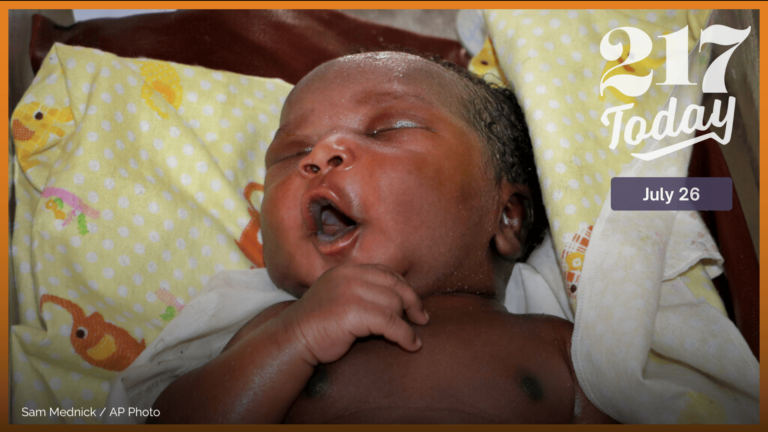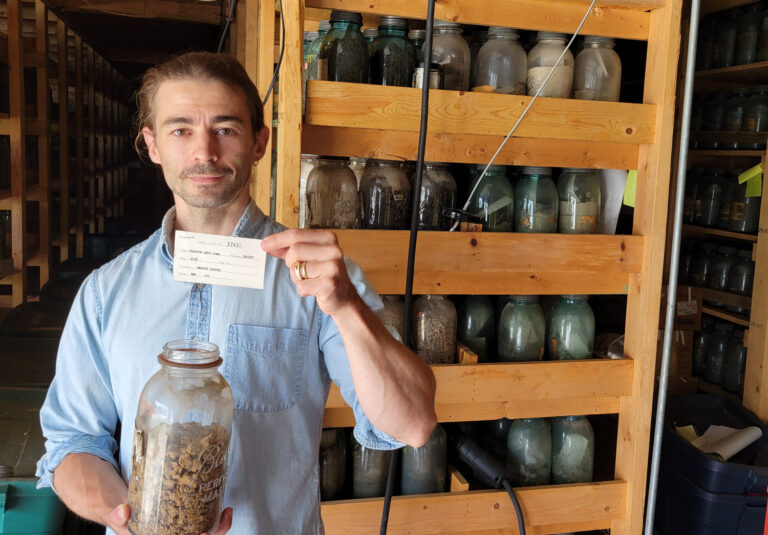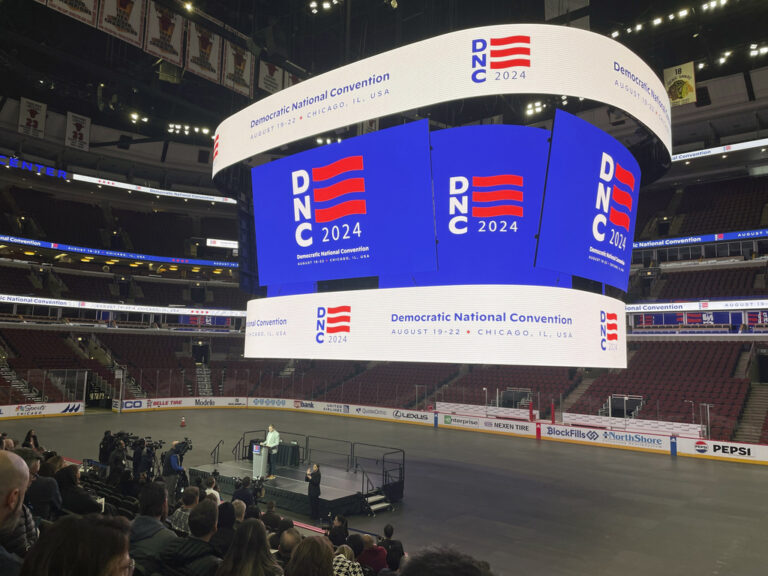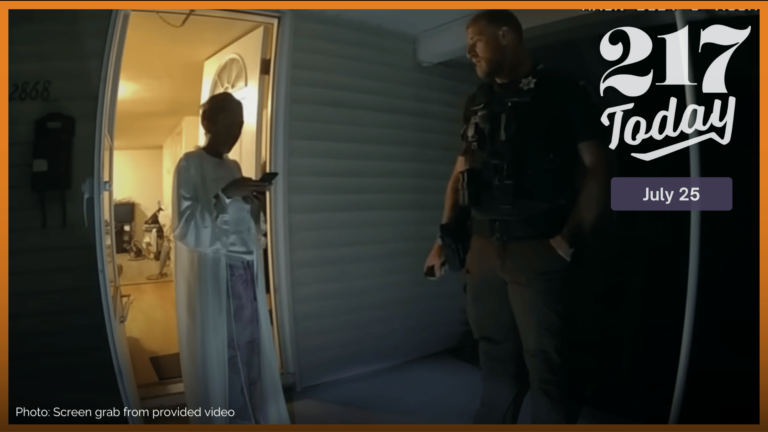CHAMPAIGN — Archival photos are the centerpiece of a new display at the Krannert Art Museum focusing on the Black lesbian experience in the Midwest.
The new solo exhibition by Jen Everett, “Could You Dim the Lights?” opens February 1 and runs through October 2024.
Powell noted the universal appeal of Everett’s work, saying, “She’s asking a lot of questions we can all attach to, I think. How are we held and beloved — in photographs and in our own families?”
For co-curator Blair Ebony Smith, the exhibit has personal significance.
“I see myself through her solo work,” Smith said. “I think I’m able to ask myself very personal questions about Black queer experience, about the vastness of that.”
IPM reporter Owen Henderson spoke with Everett, the St. Louis-based artist behind the display.
JEN EVERETT: I would consider it an archive of my own queer formation. So it includes a lot of materials from my own childhood and things that I’ve collected over time, kind of seeking myself — seeking a version of myself, of Black, queer woman throughout media.
I think, over time, living my life, being the age that I am — I’m in my 40s — and seeing the difference in representation for Black lesbians, and how that’s kind of shifted over time. But also, this kind of seeking that we do, seeking of community, seeking a reflection of ourselves and coming back to that and really wanting to give vulnerable and put that out there in my work.
OWEN HENDERSON: This exhibition is part of your body of work “Queer Cosmologies.” From what I understand that body of work deals with Blackness as it intersects with the queer experience, which you’ve touched on a little bit already.
And I think a lot of people outside of the LGBTQ+ community don’t really know about the fractures that exist in our community — that we’re not a monolith. And I was wondering if you could tell me a little bit more about how this ongoing project deals with that idea.
JE: There’s so much to say. This work in particular really examines how I have seen myself, even past versions of myself, and how that intersects with my Blackness and my queerness. So it refuses to kind of isolate just the Blackness, or just the queerness of my identity. And it’s all encompassing,
OH: This is your first solo museum show. How are you feeling leading up to the opening?
JE: I’m feeling excited, a little nervous. This work, you’ll see me appear a lot in it. And in terms of archival images of me, me as a child. And that is different from the way I’ve worked in the past. It’s kind of a vulnerable place to be.
But I think I’m at a point where I had, I had to do it, because there is and there can be kind of a seeking of yourself, and a seeking of a community of a place where you can feel held, and where you can feel comfortable in all of your identities and the multitudes.
OH: Some of these pictures are from your own past. And one that stuck out to me was a Polaroid multiplied by four of you as a kid in a hoodie, smiling from your bedroom. I wanted to ask a little more about how you came to that decision to use these photos from your own childhood.
JE: Well, I think just in the making of the work, it became apparent. One of my favorite artists Carrie Mae Weems. In a talk, she said that the work will tell you what it needs. And so when that wouldn’t let up, that feeling that this is something that the work required, and this is something I’d have to do in order to bring this this show to fruition.
I just accepted it, but it wasn’t easy. I knew that it was something I had to do. But I fought with myself and it took it took forever.
OH: Is there anything that you’re hoping visitors will take away or something that you hope visitors will think about while they’re interacting with your work?
JE: I’m just hopeful that maybe they are compelled, especially queer folks, of all ages, of all backgrounds, to know that they are not alone in the world.
No matter how much representation there is and how much we see queer folks on TikTok or Instagram, that’s very different from just walking day to day in your experience, so to know that they are not alone and that they have agency.
The Krannert Art Museum is an underwriter of Illinois Public Media.







